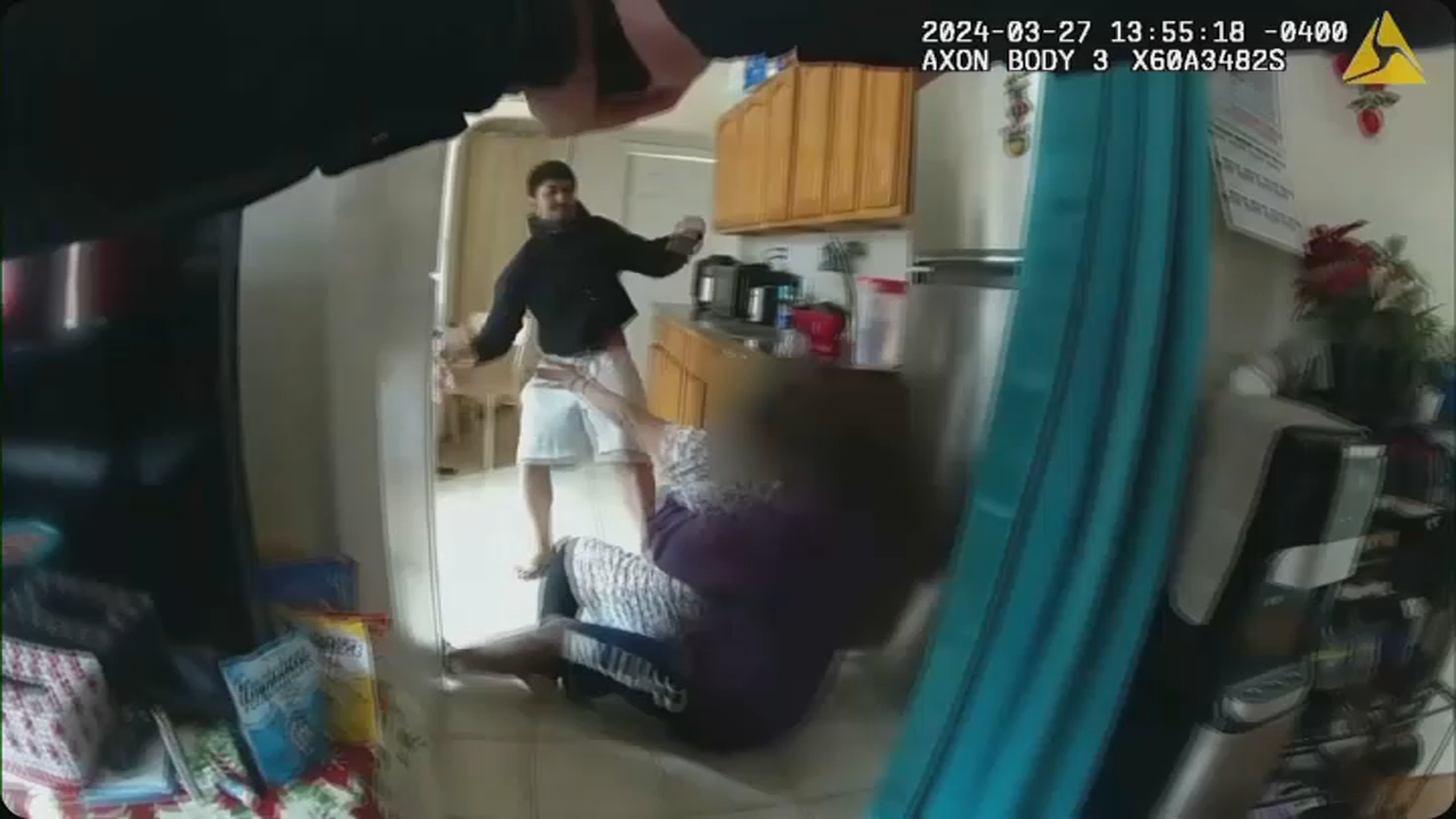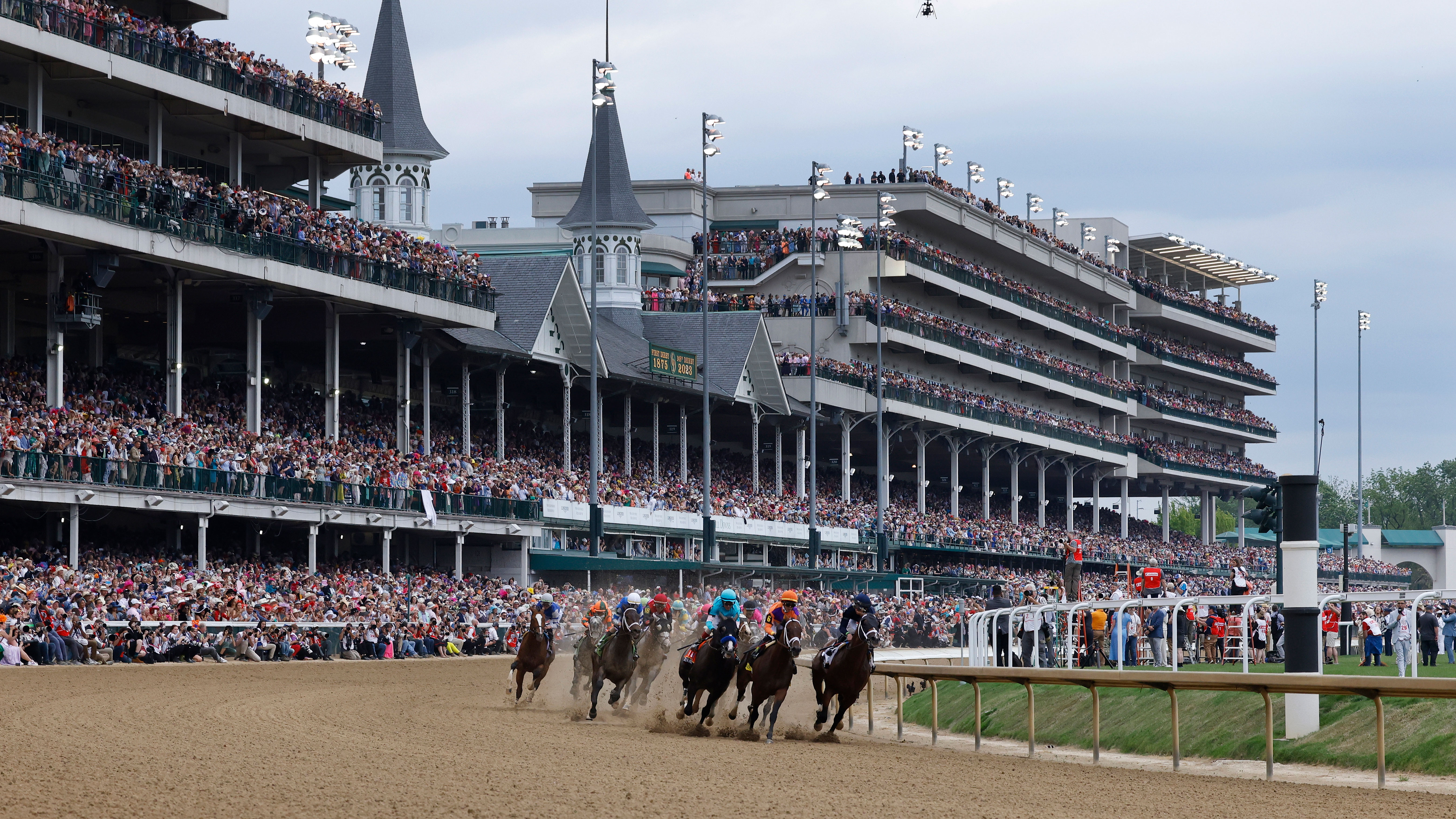Gov. Kathy Hochul and Mayor Eric Adams unveiled plans Friday to tackle the homelessness and mental health problem on New York City's subways, as their push for people to return to their offices runs up against the sharp rise in transit crime.
Adams, at a news conference in the Fulton Street subway station, referred to his days as a transit cop, when the subways were plagued with violence and people threw up their hands, thinking nothing could be done.
"Many of us feel, and the numbers are saying, we're back again," the mayor said. "It's imperative that we have the right response, that has the combination of being humane but clear. The lack of clarity is creating the conditions that we're seeing."
The city's new multi-pronged approach includes 30 "Joint Response Teams" with personnel from the Department of Health, the Department of Homeless Services, the NYPD and community groups.
Get Tri-state area news and weather forecasts to your inbox. Sign up for NBC New York newsletters.
Police will also have what the city called a "clear mandate" to enforce MTA rules, and will be trained on them. Among the prohibitions they will be expected to enforce: lying down on the seats, littering, drug use, or "using the subway system for any purpose other than transportation."
Another key change in the city's 17-page plan - requiring, rather than requesting, that people get off the train and leave the station at the ends of subway lines.
News
"You can't put a band-aid on a cancerous sore," an emphatic mayor said. "That is now how you solve the problem. You must remove the cancer to start the healing process."
Adams said the vast majority of unhoused people are not dangerous. But the pandemic has exacerbated the issue, with more people dealing with job loss and untreated medical and mental health issues, and some of those people are dangerous to themselves and the public.
Both Hochul and Adams see a widespread return to work as the key to the city's - and state's - economy rebounding fully. But they've also acknowledged that if people don't feel safe riding the subway, they won't come back.
“People tell me about their fear of using the system and we are going to ensure that fear is not New York’s reality," Adams said.
Hochul said the state was working to get more psychiatric beds at hospitals available by increasing the amount of money hospitals receive for having the beds.
“We know it’s a big problem. But shame on us if this moment in time, if we don’t turn over every single stone, find every possible way to to deal with this,” Hochul said.
Major crimes in the transit system are up 65% this year versus the same period last year, an average of 6 incidents per day. Murder, rape and felony assault have all been on the rise. Police statistics show major felonies in the subways have dropped over the last two years overall, but the numbers are difficult to compare with ridership numbers having dropped as well.
A Quinnipiac poll of NYC voters earlier this month put the numbers in stark relief. Less than half of voters said they felt safe taking the subway during the daytime, and only about a quarter said they felt safe at night.
For Adams, a former NYPD captain in only his second month as mayor, the surge in crime has become an obstacle to his recovery plans for the city.
Many of the highest-profile crimes, like the woman pushed to her death in front of a train in Times Square in January, were committed by people experiencing homelessness, which is why the urgency to tackle that issue in particular.
In the case of the fatal shoving of Michelle Alyssa Go, police said the suspect, Martial Simon, was homeless and had a history of “emotionally disturbed encounters.” Adams encountered incidents himself on his first day as mayor, when he witnessed a fight and at least one person sleeping on a train as he made a point of commuting on the subway to City Hall.
“Who wants to start their day that way? Of that level of despair that’s right in front of them?” the mayor said Friday when reflecting on his first day.
Shelly Nortz, the deputy executive director for policy at the Coalition for the Homeless, called the mayor's comment “sickening" and said “criminalizing homelessness” was not the answer.
“Repeating the failed outreach-based policing strategies of the past will not end the suffering of homeless people bedding down on the subway. It is sickening to hear Mayor Adams liken unsheltered homeless people to a cancer. They are human beings," Nortz said.
Adams' spokesperson, Fabien Levy, responded by saying the mayor “was abundantly clear today that his heart breaks when he sees fellow New Yorkers sleeping on trains.”
“We are not going to abandon those who are experiencing homelessness to lives of suffering and pain and we are not going to allow the betrayal of these individuals to continue any longer. We can help those in need, uphold the law, and restore public confidence in our transit system all at the same time,” Levy said.
Nortz said the coalition was pleased to hear, however, that part the plan would involve expanding the number of psychiatric beds at hospitals.
As subway ridership cratered during the pandemic, homeless people have become more visible, sometimes sleeping on platforms or several seats on a train, something the mayor has said contributes to a general feeling of “disorder” in the nations’ largest city.
The mayor, who has emphasized the appearance of crime and disorder as being just as important to tackle as the actual crime statistics, said it was unacceptable that the system allowed, in one case, a woman to live under a stairway inside a station for months.
“That is not dignity. That is disgusting,” he said. “And that’s not who we are as a city.”
In addition to the tens of thousands of people who sleep in the city’s shelter systems, there are uncounted thousands of people sleeping on the city’s streets and sometimes subway stations and trains.
Adams announced last month he was injecting more police officers into the system, not only having officers riding trains but having other neighborhood patrol officers spend more time in stations and on platforms.
Police Commissioner Keechant Sewell said starting next week, the police department's officers will be joined by mental health workers in the subways. The teams will focus on high-traffic areas or areas where there have been increased reports of crime.
“Trained people will look to assist those in need. We will enforce transit rules when necessary, but this is about helping people,” she said.



